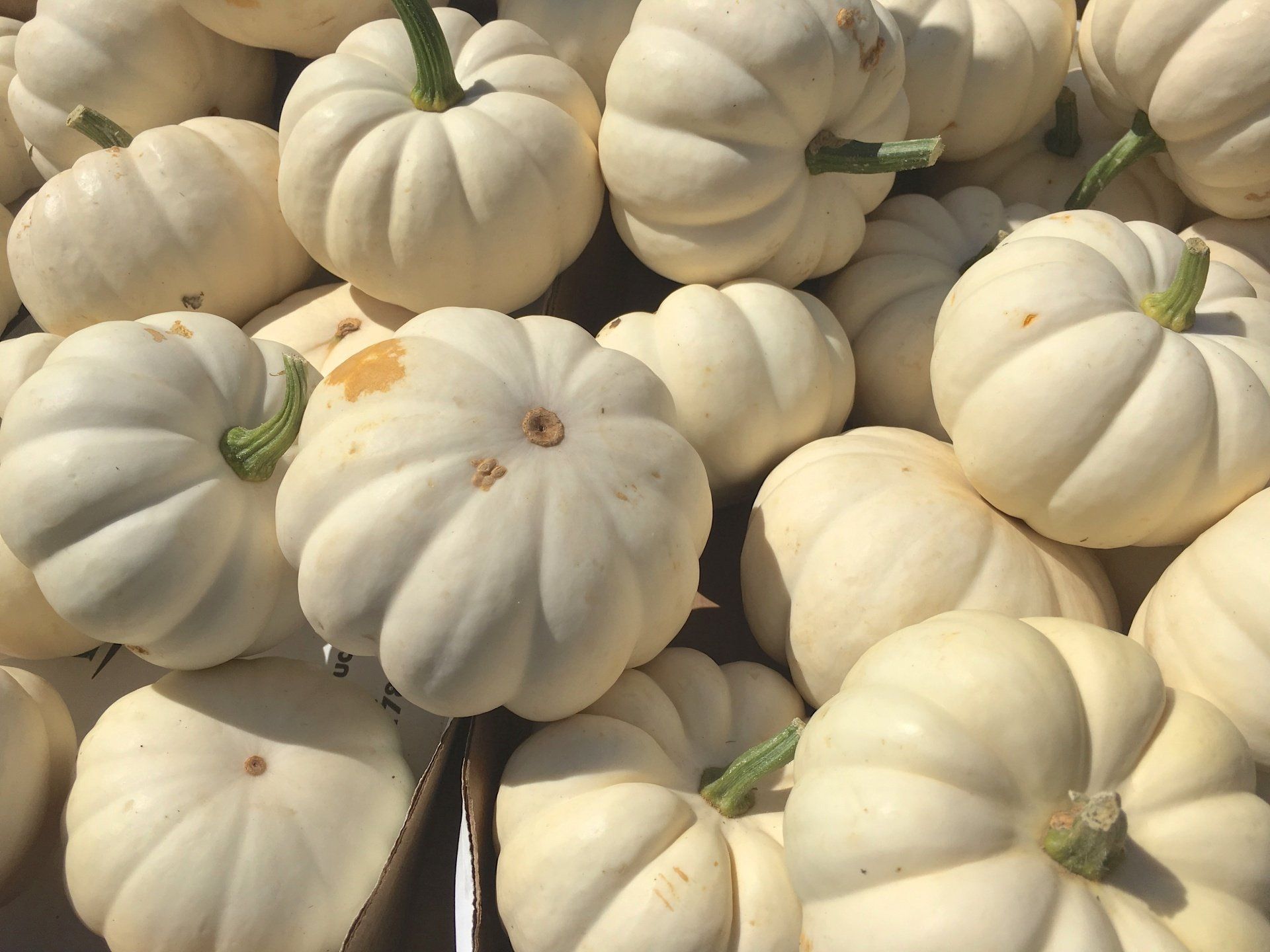Squash
KEY INFORMATION
Height: to 45cm
Spread: 150cm+
Half-hardy annual
Full sun
Germination: 5 - 14 days
Harvest: From 11 weeks
VARIETIES AVAILABLE FROM COLLIE FLOWERS
Cornell's Bush Delicata
Small Sugar
Turks Turban
Uchiki Kuri
SOWING & GROWING SCHEDULE
Sow Indoors: April to May
Sow Outdoors: May to June
Plant Out: June
Harvest: July to November

Growing Guide
Squashes come in a huge range of shapes and sizes, from massive pumpkins to tiny patty pans. They can grow snaking along the ground or up on a trellis, or other sturdy support.
From mid- to late April, sow the flat seeds on their side, 13mm deep, in 7.5cm pots of compost and keep in a greenhouse. Seeds can also be sown outdoors in the spot where they are to grow in late May or early June. Sow two or three seeds at each sowing site or in each pot. Leave in place for two weeks, or as long as possible, after germination. Thin the seedlings to leave the strongest one.
Indoor sown plants should be hardened off before planting out. Leave at least 1 metre between squash plants to avoid overcrowding. Squashes can be grown in fertile ground, and also in containers or growbags. Keep the soil or compost constantly moist by watering around the plants, not over them, this ensures the water goes down to the roots and doesn’t sit around the neck of the plant, which can lead to rotting. Feed every 10-14 days with a high potassium liquid fertiliser, such as a tomato feed, once the first fruits start to swell.
TOP TIPS
Summer squash produce fruit for several months, from mid-summer onwards, sometimes right up to the first frost. Harvest their fruits when small and tasty, with a soft skin. Regular picking will encourage further fruits to form. Summer squash tend not to store as well as winter squashes.
With winter squashes for storing, let the fruit mature on the plant and remove before the first frost. With winter squashes, place a tile, brick or wooden board beneath larger fruits to lift them off the damp soil – this prevents rotting and damage by slugs and snails. Also make sure they are exposed to full sun, to aid ripening. Ripen the skin until hard, by placing fruits in the sun for a week, either outdoors or in a greenhouse. This helps to ensure they keep well. Store the fruits in a well-ventilated, dark place at 10–15°C, spaced out so they don’t touch. Depending on the variety, winter squashes should keep for three months or more. Check them regularly for any signs of deterioration or rot.
If you have plenty of space, trailing types can be left to sprawl over the ground, but if you need to limit their spread, you can train the stems around in a large circle, inserting short canes to hold them in place. You can also simply cut off any stems that stray beyond their bounds.
Trailing squashes can also be trained up supports, but make sure they are sturdy enough to support these vigorous plants and their crop of fruits. You may need to use netting to support individual heavy fruits.
